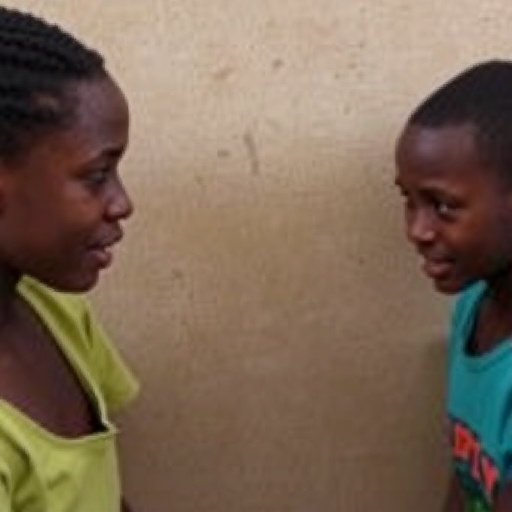In the dynamic landscape of youth development, understanding the factors that influence reproductive transitions is imperative for shaping policies and interventions aimed at enhancing the wellbeing of young people. A recent study conducted by Dejene and Gurmu has shed light on this critical issue in the context of Ethiopia, where demographic changes and social evolution are particularly pronounced. The researchers embarked on a comprehensive, multilevel analysis to discern the intricate correlates of the timing and intensity of reproductive transitions among Ethiopian youths. Their findings, published in the Journal of Population Research, reveal essential insights that may inform future educational and health strategies.
As Ethiopia navigates significant socio-economic transformations, the youth population stands at the forefront of these changes. This demographic segment, characterized by unique aspirations and challenges, often faces a myriad of influences when it comes to reproductive health decisions. The authors utilized a multistate multilevel analytical framework to rigorously examine various factors contributing to reproductive transitions. Their work underscores the need to investigate not only individual-level determinants but also contextual influences that shape reproductive choices among young people.
The timing of reproductive transitions, as highlighted in the study, is influenced by a complex interplay of economic, social, and cultural factors. Economic stability, in particular, emerges as a pivotal correlate. Young individuals who experience confidence in their economic future are more likely to delay parenthood, prioritizing education and career development over immediate family formation. This trend suggests a shift in values among Ethiopian youth, with many increasingly recognizing the importance of personal and professional growth before engaging in reproductive activities.
Moreover, cultural norms significantly impact reproductive behavior. In many Ethiopian communities, traditional beliefs regarding marriage and childbearing persist, often pressuring youths to conform to established timelines. Yet, the researchers observed a growing movement among urban youth who advocate for redefined life trajectories that emphasize autonomy in reproductive decision-making. The duality of adherence to tradition juxtaposed with progressive orientations frames the discourse around reproductive transitions that the authors explore.
The intensity of reproductive transitions, which refers to the extent of engagement in reproductive activities, also drew the researchers’ attention. The study found that educational attainment plays a crucial role; young people with higher levels of education tend to have lower intensity in their early reproductive behaviors. This correlation is not merely coincidental but reflects broader socio-economic opportunities that education provides. By increasing access to knowledge and resources, educational attainment empowers youths to make informed decisions regarding their reproductive health.
To further analyze the relationship between reproductive transitions and various socio-demographic factors, the authors conducted a thorough examination of gender disparities. The findings reveal significant differences in reproductive behavior between young men and women, influenced by societal expectations and gender roles. While young women are often subject to stricter control over their reproductive choices, young men may experience societal pressure to assert their masculinity through early fatherhood. This divergence not only highlights issues of equity but also underscores the necessity for tailored interventions that address the unique challenges faced by each gender.
The researchers took into account additional variables, such as urban versus rural residency, which also determined the timing and intensity of reproductive transitions. Urban youths, exposed to diverse influences, display distinct patterns in reproductive behavior compared to their rural counterparts. This urbanization effect complicates the analytical landscape, compelling researchers to delve deeper into how geographical context intertwines with cultural and economic factors to shape reproductive decisions.
Furthermore, the study emphasizes the role of health services in influencing reproductive transitions. Access to healthcare, particularly reproductive health services, is paramount for youths trying to navigate their reproductive journeys. The authors identified disparities in service availability and utilization between different regions of Ethiopia, which consequently affects youths’ ability to make informed decisions related to family planning and reproductive health.
Importantly, the study showcases the value of a multistate multilevel framework in understanding reproductive transitions. By recognizing that these transitions do not occur in isolation, the research opens the door for more nuanced policy framing that can incorporate diverse factors that influence young people’s reproductive choices. Policymakers and educators must be attuned to the interconnected nature of these influences and strive for holistic solutions that address the multifaceted realities of Ethiopian youth.
In conclusion, the study by Dejene and Gurmu marks a significant contribution to the understanding of reproductive transitions among Ethiopian youths. Their multilevel analysis provides a comprehensive lens through which to examine the variances in timing and intensity of these transitions. As Ethiopia continues to evolve socially and economically, these insights will be vital in shaping programs and strategies that promote informed reproductive health choices among its youth population.
The implications of this research extend beyond the academic realm; they serve as a clarion call for action. Creating a supportive environment that empowers young people to make informed reproductive choices must be a priority for stakeholders at all levels. This requires collaboration among government entities, non-governmental organizations, and communities to foster an atmosphere conducive to dialogue about reproductive health.
Ultimately, as the youth of Ethiopia navigate the complexities of reproductive transitions, a concerted effort must be made to ensure their choices are informed, respected, and valuable in shaping their futures. This study, in its essence, illuminates the path forward and underlines the importance of understanding the unique drivers of reproductive health among the youth in a rapidly changing society.
Subject of Research: Timing and intensity of reproductive transition among Ethiopian youths
Article Title: Correlates of timing and intensity of reproductive transition among Ethiopian youths: A multistate multilevel analysis
Article References: Dejene, T., Gurmu, E. Correlates of timing and intensity of reproductive transition among Ethiopian youths: A multistate multilevel analysis. J Pop Research 41, 24 (2024). https://doi.org/10.1007/s12546-024-09344-z
Image Credits: AI Generated
DOI: N/A
Keywords: Reproductive transition, Ethiopian youths, multistate analysis, reproductive health, timing, intensity.




